
| Corn Earworm, Tomato Grub, Tobacco Budworm, Cotton Bollworm (one synonym : Heliothis conferta Walker, 1857) HELIOTHINAE, NOCTUIDAE, NOCTUOIDEA | (donherbisonevans@yahoo.com) and Stella Crossley |
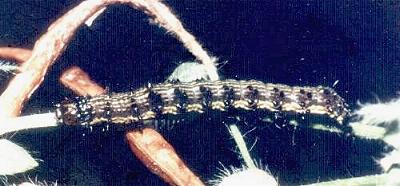

| Corn Earworm, Tomato Grub, Tobacco Budworm, Cotton Bollworm (one synonym : Heliothis conferta Walker, 1857) HELIOTHINAE, NOCTUIDAE, NOCTUOIDEA | (donherbisonevans@yahoo.com) and Stella Crossley |

This Caterpillar is initially pale green, sometimes with black dots, and a pattern of thin dark lines running along the body, the lines being darker around the second and third segments.
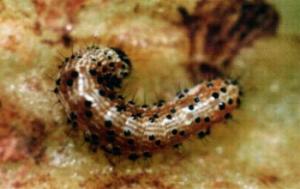
In later instars , the dark lines become less conspicuous, and the black spots develop red areas around them.
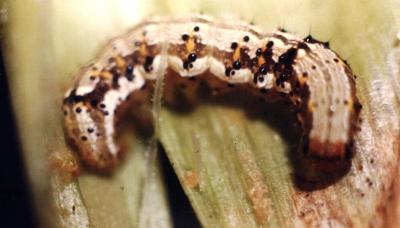
There is a good deal of variation in colour in this species. Lighter and darker forms of both caterpillars and moths are known, for example, having white instead of black spots on the caterpillars.
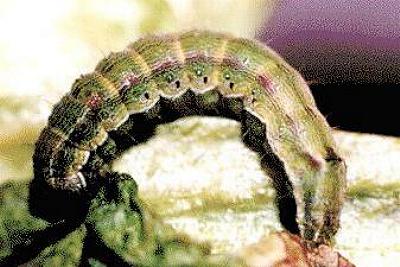
The caterpillar has posture when disturbed characteristic of a number of species in this family : it lifts its head and curls it under the front of the body. If even more disturbed, it lets go and drops, rolling into a spiral.
In the wild, it has been found on:
but it is a serious pest internationally on various crops, including :
as well as ornamental plants and flowers, including:
One specimen pictured above was actually found on :
purchased from a supermarket in Bundaberg.
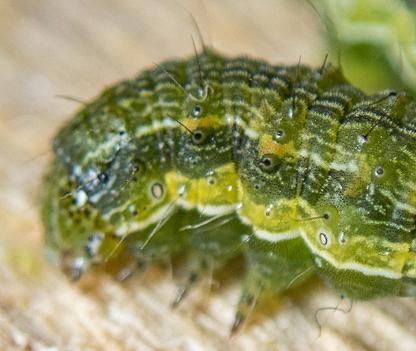
When fully grown (4 cms.) it pupates in a cocoon under the soil.
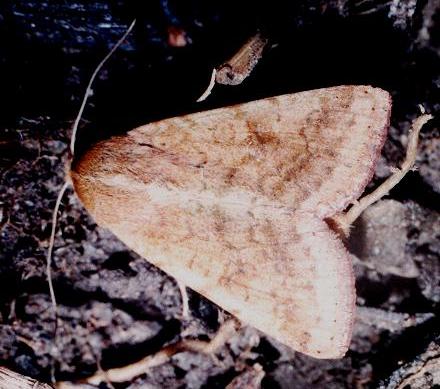
The adult moth emerges after between three weeks (summer) and six months (winter). It has brown forewings with a variable delicate darker tracery around a single dark mark on each wing. The hindwings are buff with a dark border which contains a pale patch.
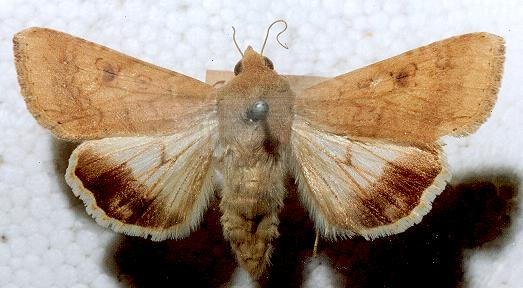
The undersides are buff with dark submarginal bands on each wing, and each fore wing also has a black comma mark and a black full stop.
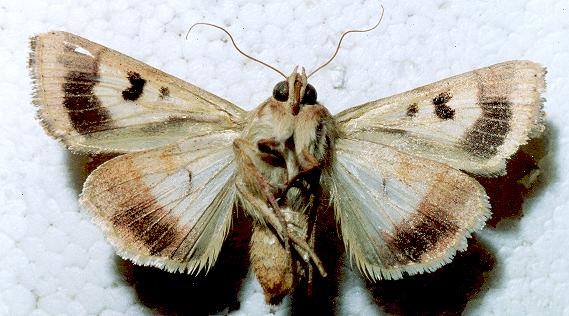
The adult moths look very similar to those of the related species in the same genus : Helicoverpa punctigera. However, for Helicoverpa armigera :
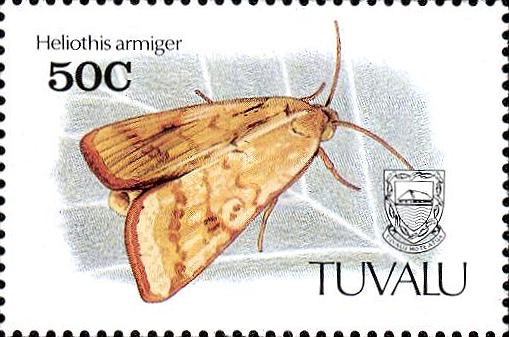
The adults fly long distances, and these have been
tracked by radar.
The species is a pest over much of the world :
Brazil,
Botswana,
South Africa,
Austria,
Spain,
United Kingdom,
India,
Japan,
Java,
New Zealand,
and most of Australia, includingNorthern Territory, Queensland, Norfolk Island, New South Wales, Australian Capital Territory, Victoria, Tasmania, South Australia, and Western Australia.
In Europe, this species is often called the "Scarce Bordered Straw", but this name seems inappropriate in Australia where the caterpillar is so common. Note that the species does not seem to be established in the North America. In Australia, it is seldom found as far south as Melbourne. However, we regularly find it in Melbourne in ears of corn purchased from a greengrocer (that are presumably grown further north).
The pheromones of this species have been identified.
Unlike its relative:
Heliocoverpa punctigera,
this species develops
resistance to many insecticides.
Attempts are being made to control the caterpillar using :
Further reading :
Ian F.B. Common,
Moths of Australia,
Melbourne University Press, 1990, fig. 50.8, pp. 49, 64, 468.
Jacob Hübner,
Noctuae II. Genuinae B. &c.,
Sammlung Europäischer Schmetterlinge,
Volume 4 (1805), Plate 79, fig. 370.
Peter Marriott & Marilyn Hewish,
Moths of Victoria - Part 9,
Cutworms and Allies - NOCTUOIDEA (C),
Entomological Society of Victoria, 2020, pp. 34-35.
Marcus Matthews,
Heliothine Moths of Australia:
A Guide to Pest Bollworms and Related Noctuid Groups,
CSIRO Publishing, Melbourne 1999, pp 5-7, 14, 106-115, 183-184, 201,
Plates 12, 13, 15, 19, 21, 22, 23.
Paul Zborowski and Ted Edwards,
A Guide to Australian Moths,
CSIRO Publishing, 2007, p. 198.
 caterpillar |  butterflies |  Lepidoptera |  moths |  caterpillar |
(updated 15 April 2013, 30 January 2025)